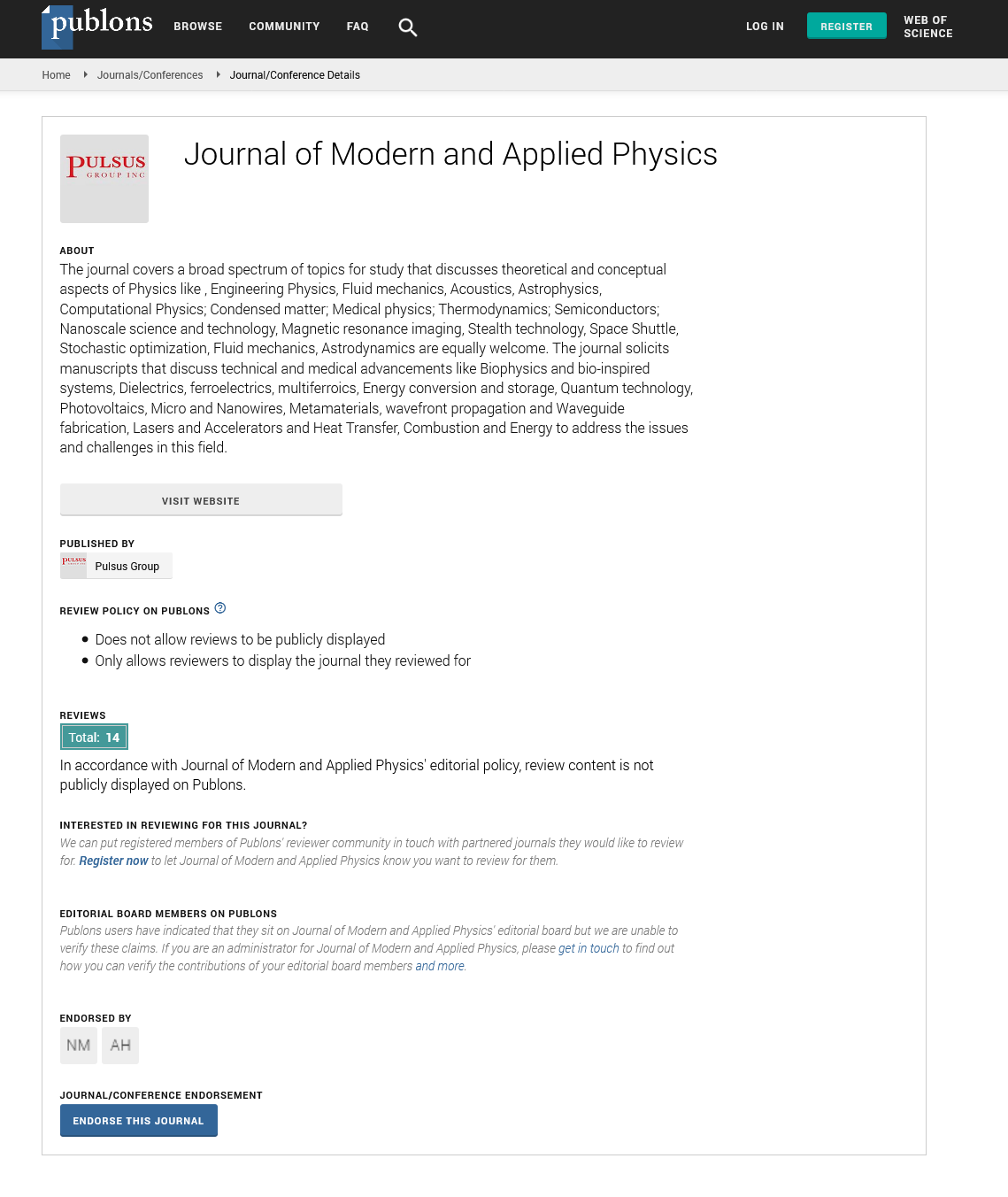Spacetime and the observer in quantum mechanics
Received: 04-Jan-2023, Manuscript No. PULJMAP-23-6056; Editor assigned: 05-Jan-2023, Pre QC No. PULJMAP-23-6056(PQ); Accepted Date: Jan 17, 2023; Reviewed: 06-Jan-2023 QC No. PULJMAP-23-6056(Q); Revised: 17-Jan-2023, Manuscript No. PULJMAP-23-6056(R); Published: 19-Jan-2023, DOI: 10.37532/ puljmap.2022 .6(1); 01-02
Citation: Koutandos S. Space-time and the observer in quantum mechanics. J Mod Appl Phys. 2023; 6(1):1-2.
This open-access article is distributed under the terms of the Creative Commons Attribution Non-Commercial License (CC BY-NC) (http://creativecommons.org/licenses/by-nc/4.0/), which permits reuse, distribution and reproduction of the article, provided that the original work is properly cited and the reuse is restricted to noncommercial purposes. For commercial reuse, contact reprints@pulsus.com
Abstract
We claim that associated with a curvature in spacetime caused by the presence of mass is an alteration of spacetime. The dipolic nature of the charge plays an important role in this. In this article we give specific formulas for the events taking place and find out about the role of the wave function in measuring time.
Keywords
Quantum thermodynamics; Hidden variables of quantum mechanics; Quantum mechanics; Free energy
Introduction
There is a long story behind the search for hidden variables in quantum mechanics. One of the branches of this field of research comes from De Broglie’s hypothesis of the electron clock. The reader may refer to some recent work on this [1,2].
We support in this paper that apart from new volume created by the electron mass there is also a local spacetime depending on the observer just like around the globe there is a local time.
What is used in special relativity for separating spacelike and timelike events are cones. These cones become solid angles for the observer in order for him to observe an event.
We have all heard the philosophy that everything in life is a cycle. We believe that since we have preservation of the entropy for the whole system when it is closed there happen some elementary thermodynamic cycles. We shall begin with the current knowledge gained from previous work [3]:

Therefore what comes out from equations (1) and (2) is that the coefficient of efficiency of this cycle is:

To continue our line of arguments we put forth the Lagrangian density as it is found in numerous works of different authors[4]:

Further we know from relativity that:

We have assumed from previous work that the action is connected to the variation of mass and volume:

On combining equations (6) and (7) and complementing from previous work we finally have [3]:

If we attempt to solve the last two parts of the equation (8) we find:

Comparing equation (9) with a previously gained result [3] the conclusion is the following

The result of equation (10) is in agreement in general lines with the result of another author [5]:

The solid angles have the following dependence on spacetime interval:

There is one last formula we need to expose in order for the reader to comprehend the following calculations:

The metric of spacetime with the altered speed of light is the following:

We also are aware that the following identity is valid (for simplicity in the absence of magnetic field):

On using equations (13-15) and (8) we derive the following basic formula:

Conclusion
The final conclusion which is equation (16) is in order with our definition of force density and the arguments used in our precious article about the dipole nature of the electron which splits spacetime:

We have not proved about the cyclic nature of time completely and we hope that other investigators will complete this work.
References
- Dolce D. Introduction to the quantum theory of elementary cycles: the emergence of space, time and quantum. arXiv preprint arXiv:1707.00677. 2017.
- Hestenes D. Quantum mechanics of the electron particle-clock. arXiv preprint arXiv:1910.10478. 2019 .
- Fuchs CA. Quantum mechanics as quantum information, mostly. Journal of Modern Optics. 2003;50(6-7):987-1023.
- Kobe DH. Lagrangian Densities and Principle of Least Action in Nonrelativistic Quantum Mechanics. arXiv preprint arXiv:0712.1608. 2007.
- Lucia U, Grisolia G. Time & clocks: A thermodynamic approach. Results in Physics. 2020;16:102977.





